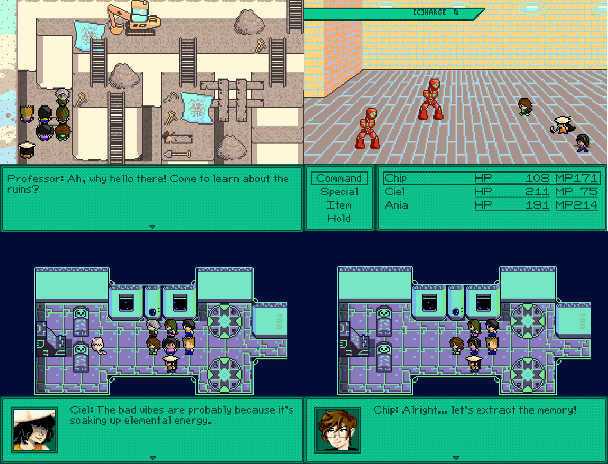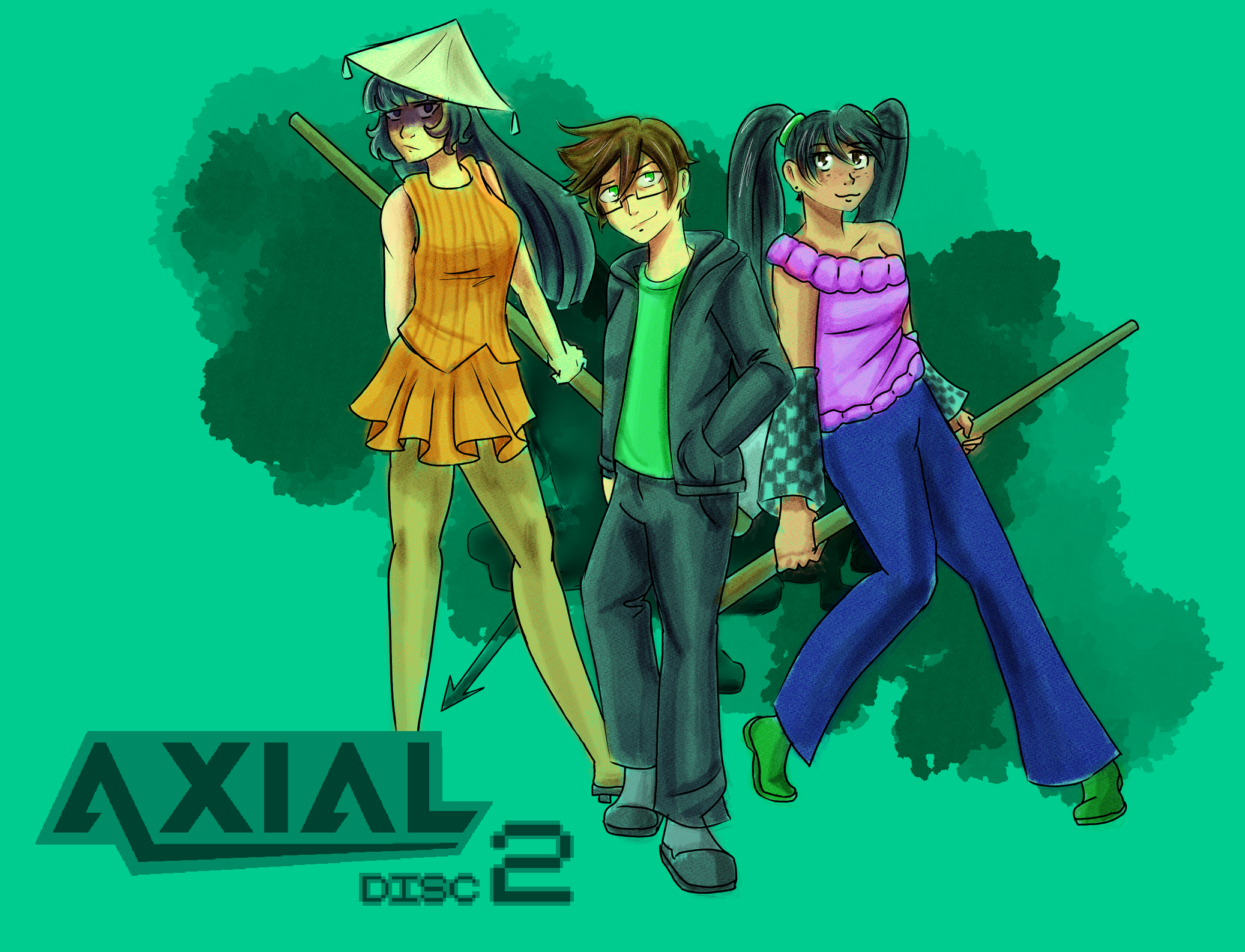Every Frame a Painting, Every Game a Film Series
This is a fun one!
So, it's around that time of year where I like to go back to a formative work that made me who I am in some way. There are a lot of these, we've got The World Ends With You and Scott Pilgrim and even Naruto. Live-A-Live's definitely gonna be one of those too. But this time around, it was Cowboy Bebop I wanted to go back to, and man is it even better than I remembered! While I was watching, I was reminded of a quote that legendary director Shinichiro Watanabe brought up about his approach to making each episode.
"My initial desire was to make a movie of Cowboy Bebop, so the whole time I was doing the TV series, I had that in mind."

Side note: I will never get over how cool this man always looks.
And here's an awesome interview with this guy, he's always been a huge inspiration to me.
Watanabe-san originally intended for Cowboy Bebop to be a film, and while he worked on the TV series he treated each episode not as an episode in a show, but as a film in a series. Of course, there are restraints and compromises that have to be applied to an episode over a film (length is a big one), but the point is that each episode is created with the plot and pacing of a stand alone story that is worthy of the effort deserved in a feature film. Cowboy Bebop is largely episodic, with the majority of each episode changing the status quo only a small amount, but unlike many other episodic series, these stories don't feel "less important", but rather just self contained. In serialized stories, it's difficult to find yourself remembering any given episode as everything flows from one cliffhanger to the next, an endless string of events that simply get interrupted every 22 minutes. But in Cowboy Bebop, you can follow this grand narrative from start to finish and appreciate the larger story the whole series tells, while also remembering the special personality each episode has. My personal fav is episode 22, "Cowboy Funk", and this is one of the only series where I could actually tell you what my "favourite episode" is instead of just a favourite moment or plot beat.
Watanabe-san isn't the only creator with this mindset, either. Legendary (although perhaps controversial) showrunner Steven Moffat has said "I think you know you've got a good idea for a Doctor Who story if you think, 'well, I've just blown that feature film idea forever, haven't I?'" You can see this at play in dozens of other acclaimed series as well, such as Avatar: The Last Airbender or Star Wars: The Clone Wars. There is an overarching narrative that dedicated viewers can follow and keep up with, and yet the majority of the episodes follow their own internal three-act structure, with a satisfying conclusion to the primary conflict established in a given episode.
Fellow developer/friend/eternal rival mf_WillBlack often cites the Ki Sho Ten Ketsu story structure in his writing, and this is a concept I've been fascinated with ever since he explained it to me. It's also a concept that I still don't fully understand yet. It's a four act story structure often employed in Japanese media that has been used in so many of my favourite stories, so much so that it could almost be argued that this story structure is the reason these stories resonated with me so much.
KSTK breaks itself into four acts: Ki (The introduction), establishes the status quo. This is where the world is set up, the characters and their motivations are introduced, and, at the end of this act, the conflict is revealed. Keep in mind that this act isn't just for the beginning of a story in the grand narrative, but also the beginning for each chapter (this would be where you establish what the characters that the audience already knows are up to, and what they are currently doing within the world that you've already established). Sho (The Development) is when events begin to actually occur in the story. The audience is now "on the same page" as the characters, and thus are introduced to information in the plot at the same rate as the characters from this point forward. The action continues to rise throughout this act, and this will typically be the longest act in a given structure. Ten (The Twist) is where the rising action makes its peak, and an event causes the direction of the story to take a new direction. This is the act that sets KSTK apart, and it's fantastic for keeping the drama interesting by diverting the story away from the natural course that it would have otherwise taken. The Ten act doesn't need to be a huge plot twist, but it does need to shift the direction of the story in a way that would not have been the natural expected outcome. Finally, there's Ketsu (The Resolution), which is where the action finally begins to fall back down and the outcomes of each event reveal themselves. The Ketsu arc is relatively short, and it's the point of the story where everything falls into its place.
This video was a great resource in giving me a better understanding of the KSTK story structure.
Okay, so what's this got to do with Axial?
I'm glad you asked! The reason I'm talking about television series right now is because video games (particularly your typical narrative driven video game with several hours of playtime) have a lot more in common with television than films. Games are often composed of a series of segmented challenges, which can take the form of levels, stages, chapters, or in the case of RPGs, dungeons, and each of these challenges serve as their own self contained story. Games are not simply a series of story events that stretch on between dungeons. Instead, each dungeon has a setup (uncovering why the player has to go to that dungeon), a development (the player exploring that dungeon and uncovering its secrets), and a resolution (the player performs the task they came to that dungeon to do, and continues onward to their next adventure). A good dungeon will even have a twist, perhaps that they are prevented from performing their task by the boss of that dungeon, or that this dungeon carries an even greater secret that they must investigate. Either way, every dungeon serves as its own mini narrative.

In this dungeon I'm working on, the setup is the party being interested in investigating these ruins for plot reasons I won't spoil. The development is them exploring the ruins and fighting the enemies inside. The twist is that at the end of the ruins, a giant Eater is absorbing elemental energy. And finally, the resolution: they got what they came here for, and they head off on their next adventure.
By treating each dungeon like a film in an episodic series, you're able to make each chapter of your game a memorable story that can be enjoyed in isolation. The big picture is extremely important, yes, but each piece of the puzzle should be able to stand up as a beautiful painting all on its own. Your game is a series, and the dungeons are its episodes.
Get Axial Disc 2
Axial Disc 2
That's the way it is.
| Status | Released |
| Author | Sawyer Friend |
| Genre | Role Playing |
| Tags | 16-bit, 8-Bit, chiptune, Game Boy, JRPG, Pixel Art, Retro, Singleplayer, Turn-Based Combat |
More posts
- 1.1.7 (13/19/24)Dec 19, 2024
- 1.1.5 (11/30/23)Nov 30, 2023
- 1.1.0 (08/04/23)Aug 05, 2023
- Patch 1.0.5 (07/25/23)Jul 25, 2023
- Patch 1.0.4 (07-15-23)Jul 15, 2023
- Axial Disc 2 OST Out Now!Jul 13, 2023
- DISC 2 UPDATE 1.0.3 (07/09/23)Jul 10, 2023
- Thank YouJul 04, 2023
- Director AMA - 01/18/23Jan 18, 2023
- Director AMA in the Discord, Tuesday at 4 PM MST!Jan 16, 2023

Leave a comment
Log in with itch.io to leave a comment.